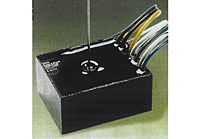
Robert McKeown Company, Inc.
111 Chambers Brook Road
Branchburg NJ 08876
Toll Free: 1.800.631.1125
Phone: 908.218.9000
Fax: 908.218.8949
Email: sales@robertmckeown.com
Website: www.robertmckeown.com
111 Chambers Brook Road
Branchburg NJ 08876
Toll Free: 1.800.631.1125
Phone: 908.218.9000
Fax: 908.218.8949
Email: sales@robertmckeown.com
Website: www.robertmckeown.com

